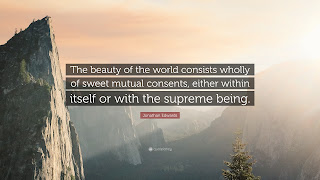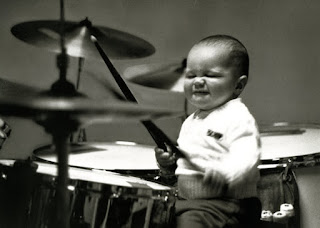To define is to separate and, one hopes, to clarify. Sometimes, however, definitions also create problems. Do religion and science represent two clearly definable two things?
In this post, I return to those questions and offer my answers.
 |
| This post again excerpted from my book |
Peter Harrison has argued that some definitions that we take for granted have only existed in the past 300 years or so. In that sense they are arguably “modern”—i.e., post-Enlightenment—concepts. For that reason he would rather talk of the “territories” of religion and science, not their definitions. Referring to the historic alterations in defining science, Harrison writes on the shift from emphasizing an approach to focusing on what it produces:
"Overstating the matter somewhat, in the Middle Ages scientific knowledge was an instrument for the inculcation of scientific habits of mind; now scientific habits of mind are cultivated primarily as an instrument for the production of scientific knowledge." Peter Harrison
Harrison then describes how views of religion have changed since the time of
Thomas Aquinas in the twelfth century:
“Between Thomas’s time and our own, religio has been transformed from a human virtue into a generic something typically constituted by sets of beliefs and practices.” Peter Harrison
This prodigious and erudite work, which represents Harrison’s 2011 Gifford Lectures, is fundamentally discipline-changing and will influence how I describe these two terms in my reconstruction of historical American views on religion and science.
Nonetheless, Harrison repeatedly focuses on “beliefs and practices,” which is inadequate for grasping contemporary definitions of religion. True, one of the greatest minds in the sociology of religion, Émile Durkheim, offered this definition in his 1912 Elementary Forms of Religious Life: “A religion is a unified system of beliefs and practices relative to sacred things, that is to say, things set apart and forbidden—beliefs and practices which unite in one single moral community called a Church, all those who adhere to them.” But a great deal has changed in the past 100 years in the study of religion, and any number of more recent commentators such as Robert Bellah, Wilfred Cantwell Smith, Huston Smith, Clifford Geertz, Robert Orsi, and Stephen Prothero do not solely emphasize beliefs and practices.
Prothero is perhaps clearest in presenting his “four Cs” of religion:
“creed, cultus, code, and community.” (Stephen Prothero's four marks of a religion)
Obviously beliefs (“creeds”) and practices (“cultus”) can be found in this palette, but these two do not exhaust his list. Similarly, Orsi, in his ground-breaking The Madonna of 115th Street: Faith And Community In Italian Harlem, 1880–1950, coined the term lived religion as including “the work of social agents/actors themselves as narrators and interpreters (and reinterpreters) of their own experiences and histories, recognizing that the stories we tell about others exist alongside the many and varied story they tell of themselves.” At this point I’ll add myth or story—narratives about how the world works and our place in it—as central to what a religion does.
Religious narratives and practices form us. Or, put differently, as George Lindbeck pointed out in his brilliant The Nature of Doctrine, religious teachings do not simply express internal states of piety (the experiential-expressive model), but form how we experience life and the world. Lindbeck, appropriating the later Wittgenstein, summarized his cultural-linguistic alternative:
“a religion can be viewed as a kind of cultural and/or linguistic framework or medium that shapes the entirety of life and thought.” George Lindbeck
Finally, these comments lead to two related definitions—theology, “the systematic study and development of religious beliefs and theory,” and theologians, those who produce theology.
In addition, what I hope is clear then is that these scholars do not equate religion with belief in a supernatural being. Buddhism, as is commonly known, has many nontheistic forms and it is not even clear that the Buddha himself had much use for a god. Belief in God or many gods may of course be a component of religion in the sense that I’m using the word, but there’s much more. The scholarly definition of religion brings us much closer to spirituality in common parlance, especially among emerging adults who play a major role in this book and my methods, which makes it difficult to interpret “I’m spiritual, but not religious.” Roughly speaking, to be spiritual is to be religious in the academic study of religion.
From Harrison I’ve learned a sensitivity to the ways in which the terms religion (or religio) and science (or scientia) have changed during the past 300 years in the story I am telling. He thus highlights the problem of essentialism, which Joshua Reeves also raises, that there are enduring essences in religion and science, or, put another way, that these two are natural kinds; i.e., ones that exist in nature and not simply in the socially constructed world of human beings.
Related to the issue of essentialism is the question Who speaks for a particular religion? I often tell my introductory to religion students that, in a lecture on Islam, for example, I’m offering general contours for the religion as a whole, but they shouldn’t think that this applies to every single 1.8 billion Muslims. If religion is a “thing,” then all who participate in this “thing” ipso facto agree. But it’s not that simple. Religion, like truth, resists simplicity.
Jettisoning essentialism can lead to significant problems, as Reeves admits,
"If one rejects essentialism—if one gives up the assumption that unique features unite science across time and disciplines—then there is no straightforward way to prove the 'scientific' nature of theological claims or to assert the cognitive parity of theology and science." Joshua Reeves
He’s right. Although essentialism makes a scholar’s life easier, it’s deficient. In addition to mourning the loss of essentialism, we cannot comprehend the relationship of science and religion solely as cognitive categories. And yet, even if I don’t swallow anti-essentialism whole in this book—or that we best grasp religion and science as sources of systematic knowledge (alluding to John Evans)—I note these critiques as a way to chasten any overly enthusiastic conclusions. And below I will even propose two working definitions.
Finally, before asserting that I can propose those definitions I will further complicate the binary mode of science and religion by gradually slipping in a third term (one that admittedly does not even make it into my title): technology, which is replacing elements of what has been defined as science in the minds of many. In agreement with the comments by Willem Drees, technology is increasingly central to the science and religion dialogue: “The practice of science is culturally and technologically embodied….” In studying the mindset of 18–30-year-olds, I have discovered that technology and science are closely related. That these two terms appear conjoined merits no particular power for determining their definitions. Nevertheless, we cannot comprehend Artificial Intelligence or genetic engineering, as two examples, except as both scientific and technological pursuits.
Moreover, technology and science are actually quite close, and what affected the historical interaction of “science and religion” was not only Charles Darwin’s Origin of Species, but also the development of geography and shipbuilding that brought the English and Spanish to the Americas and thus Darwin to the Galapagos.
With these considerations in mind I arrive at my working definitions—or, perhaps better, as heuristics—of my key terms.
Science is “knowledge about or study of the natural world, framed in theories based on observation, which are tested through experimentation.” Science studies nature.
Religion, which is an even trickier term than science, doesn’t just “study God,” but it can be defined as “the belief in God or in many gods or Ultimate Reality, as well as an organized system of beliefs, ceremonies, sacred stories, and ethical guidelines used to relate to God, a plurality of gods, or Ultimate Reality.”
Finally I define technology as “the use of science in industry, engineering, etc. to invent useful things or to solve problems” and “a machine, piece of equipment, method, etc. that is created by the use of science.”
Which leads to a question: What do you think?




